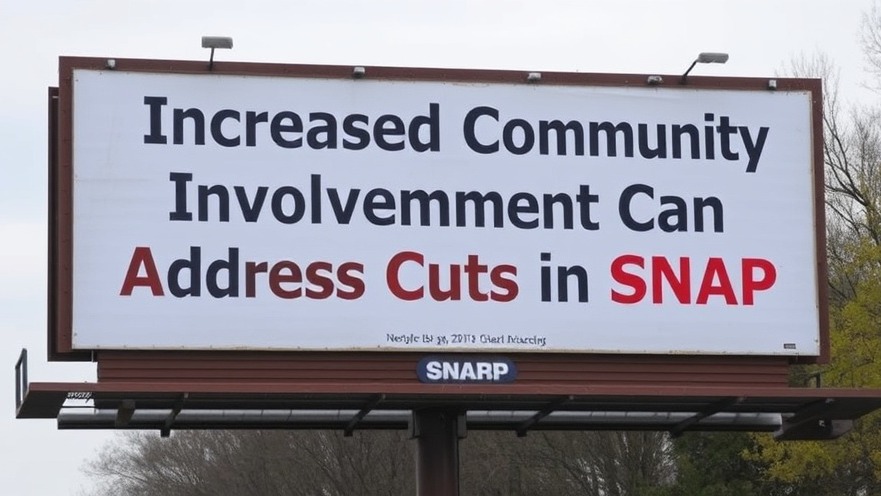
Understanding the Impact of SNAP Benefit Cuts
The recent announcement regarding cuts to the Supplemental Nutrition Assistance Program (SNAP) has raised eyebrows and sparked concerns among communities, particularly among those who rely heavily on these benefits. With millions of Americans depending on SNAP for their daily nutrition, the decision to reduce funding is not just a bureaucratic issue but one that has profound implications for health and well-being. This article delves into the reasons behind the cuts and the potential consequences for individuals and families.
In 'Why SNAP Benefits Are Getting Cut,' the discussion dives into the implications of these reductions, exploring key insights that sparked deeper analysis on our end.
Why Are SNAP Benefits Getting Cut?
SNAP, formerly known as food stamps, provides essential food assistance to low-income families, helping them afford healthy and nutritious meals. Recently, government policy shifts and economic adjustments have led to a reevaluation of SNAP funding and distribution methods. These changes can stem from various factors, including budget constraints imposed by lawmakers and the shifts in economic conditions affecting federal funding.
One of the central reasons attributed to the cuts is the evolving baseline of economic recovery post-pandemic. As the economy slowly bounces back, policymakers may believe that fewer individuals need assistance. However, many experts argue that this perception does not reflect the reality of food insecurity levels, particularly among vulnerable populations.
The Human Cost of Reducing Food Assistance
For families who already face tight budgets, cuts to SNAP could result in tough choices: pay rent or buy groceries? The answer shouldn’t have to be so difficult, yet the reality is that loss of benefits could push many into a situation where healthier food options are impractical due to financial constraints.
Additionally, for children, seniors, and individuals with disabilities, reduced access to nutritious food can lead to long-term health issues. Studies have shown that inadequate nutrition is linked to a range of health risks, including obesity, diabetes, and heart disease. So, while the goal might be financial austerity, the health repercussions could be profound.
A Community-Led Response
In the face of these cuts, community organizations and local food banks are stepping up to fill the gap. Many initiatives are being created to provide nutritious food options and resources for those affected by the changes in SNAP. Collaborative efforts between non-profits, healthcare organizations, and local governments aim to support underserved populations, inspiring hope in what feels like a challenging time.
Finding local support allows individuals to access nutritional education and cooking classes while creating a community of support that celebrates healthy living, irrespective of economic status. Programs aimed at encouraging sustainable eating habits and offering resources to maximize budget-friendly food options are essential right now.
Promoting Sustainability Amid Change
Embracing sustainability becomes a significant focus when budget cuts enter the conversation. Community gardens and local farming initiatives can provide fresh produce as a solution to food insecurity. Engaging in these programs not only serves a practical need but also nurtures a sense of community and empowerment.
Gardening projects and farmers' markets offer a range of benefits beyond just food production; they promote physical activity and mental well-being and foster social connections, which are crucial for holistic health.
Looking Forward: Solutions We Can Champion
Though cuts to SNAP benefits pose significant challenges, there are actionable steps that individuals and communities can take to navigate these changes effectively. Advocacy plays a vital role in addressing food insecurity; staying informed and voicing concerns to local representatives can influence policy and funding decisions. Engaging in community meetings, local agricultural initiatives, and promoting awareness about nutrition helps keep the conversation alive.
It's also essential for those unaffected by these cuts to understand the impacts and act with empathy. Encouraging donations to food banks and local relief programs can significantly lighten the burden for families in need. A united approach to ensuring everyone has access to healthy food can foster resilience and support.
Ultimately, we can transform challenging situations into opportunities for growth. Together, we can build stronger communities that embrace wellness and ensure that every individual can nourish themselves properly—regardless of economic standing.
 Add Row
Add Row  Add
Add 




Write A Comment